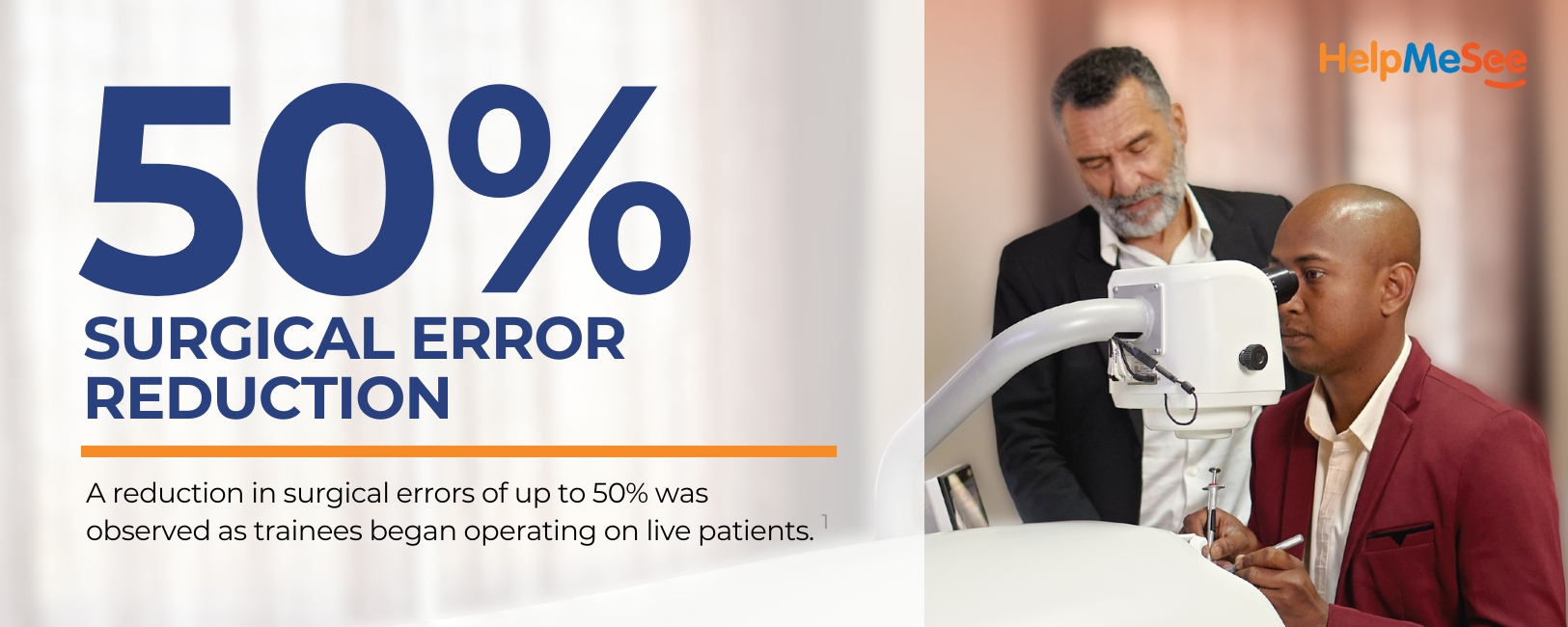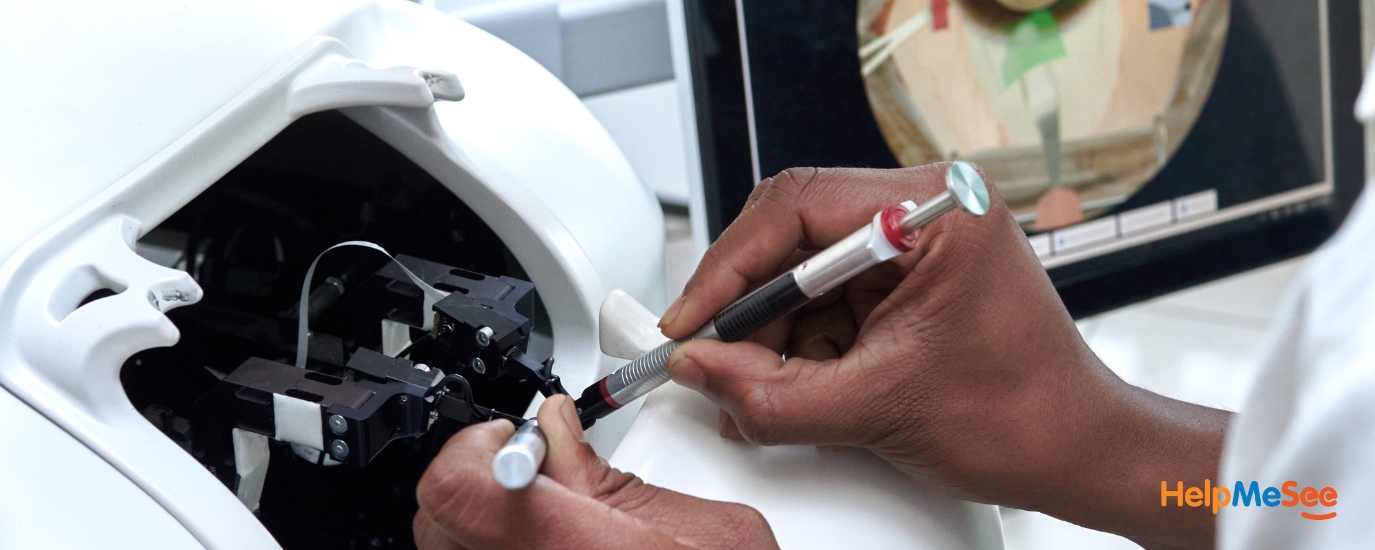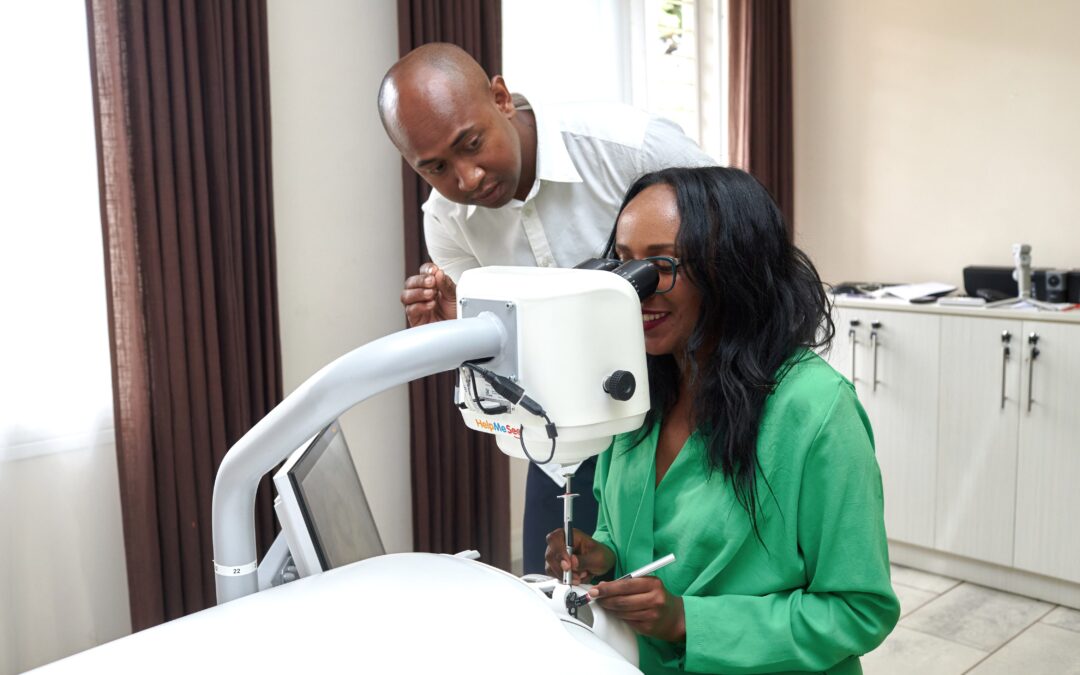A comprehensive guide to cataract surgery training with HelpMeSee.
Cataract surgical training is evolving. While most residency programs use an apprenticeship model, allowing trainee surgeons to progress through didactic learning, wet labs, observing surgery, and performing parts and then entire procedures under supervision, surgical simulation-based training is gaining momentum. This innovative training method can help prepare trainees for real-life surgical scenarios through unlimited opportunities to repeat procedures, perfect their technique, and enhance their competence and confidence without risking patient safety.
The HelpMeSee Simulation-based Training Program is a virtual reality simulation-based cataract surgery training platform that provides competency-based surgical education to residents, fellows, and practicing ophthalmologists. At the core of the program is the Eye Surgery Simulator, a technology that replicates the intricacies of the ocular anatomy to deliver high-fidelity spatial, visual, and tactile surgical realism in a risk-free environment virtually indistinguishable from a real cataract surgical field.

Trainees use standardized methodology on the simulator to minimize the learning curve, refine their skills, master vital procedures, decrease intraoperative complications, and improve patient safety. (1) There are six cataract surgery training simulation courses:
- Manual Small Incision Cataract Surgery (MSICS);
- Phacoemulsification;
- Suturing;
- Complications Management;
- Phacoemulsification to MSICS; and
- MSICS to Phacoemulsification.
The HelpMeSee Eye Surgery Simulator has been validated to reduce surgical errors during tunnel construction by about 50%. (1)

Gabriela J. Trabal-Yulfo, MD, an ophthalmologist from San Juan, Puerto Rico, is one of more than 2,500 cataract specialists globally who have trained with the Eye Surgery Simulator. Dr. Trabal-Yulfo shared with HelpMeSee that the training program helped her gain the confidence, surgical proficiency, and decision-making skills required to perform safe and effective cataract surgery and provided her with a seamless transition from simulation to a real-life surgical environment.
“When I was in residency, we didn’t have any simulators,” she said. “[Practicing on] pig eyes is not great. … It doesn’t feel the same, and once you do surgery you know it’s not the same, so you lose confidence in what you are doing or maybe not pay that much attention because you know you just won’t be able to translate that into real life. But with the simulator, the cornea felt like the cornea. I know that it’s going to help me [more] than all these [pig eyes] that I’ve done.”
Dr. Trabal-Yulfo completed her residency in ophthalmology at the University of Puerto Rico and a cataract and refractive fellowship with Mitchell Jackson, MD, of Jackson Eye, in Lake Villa, Illinois. She completed the course after residency.

Simulation-based training removes several hurdles of an apprenticeship training model, including dependency on technology availability, limited exposure to complex case management, limited exposure to many surgical techniques, subjectivity in the assessment of trainee proficiencies, and lack of objective feedback mechanisms. A simulation-based training model also promotes standardizing curriculum delivery, ensures consistency in skills acquisition and performance metrics, and facilitates objective feedback and competency-based progression in an instructor-led model.
“What’s been great about the instructors is that they have done the surgery a lot of times. So even questions that have popped up … or even learning new techniques, they can answer them,” Dr. Trabal-Yulfo said. “You’re expanding your mindset as well, having professional ophthalmologists who have done these thousands of times, literally, [provide instruction]. … Even someone who has been in practice for 30 years would get knowledge from it.”
Bethany Rommel, MD, also trained on the HelpMeSee Eye Surgery Simulator. She completed her ophthalmology residency at West Virginia University Eye Institute and now practices at Manning Rommel & Thode Associates in Lancaster, Pennsylvania.
“[The HelpMeSee Simulation-based Training Program] was like a condensed residency,” she said. “Not only was the hands-on aspect extremely valuable, but the ability to do repetition after repetition because you have that instant feedback was valuable as well. To have instant feedback not only from the technical data from the machine but from two experts watching … it was just a wealth of knowledge. If you think of residency, you gather all these pearls, and basically this experience was like the pearl necklace, all in a row. The consistency and the condensed nature of [the program] was invaluable.”
HelpMeSee is a global nonprofit organization dedicated to restoring vision to millions of individuals affected by preventable blindness from cataracts. Founded in 2010, HelpMeSee has a goal to be the world leader of innovative and scalable surgical eye care simulation-based training to overcome the fight against preventable blindness and create a future where everyone has access to eye care and the opportunity to see clearly.
